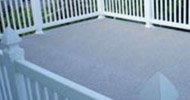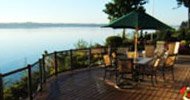Mesh Hog Panels For Deck Railing and Residential Guardrail Requirements
We are replacing our deck railing and screening in our back porch and are thinking of using industrial grade mesh panels for the railing. Will this meet code in Ontario?
Editor's Comments
This is a great question. This question has been asked quite often and is important to address before beginning your next building project!If you are planning on building your railing panels using industrial grade mesh—or any other climbable material such as horizontal cables—there are a few things to consider, such as your local building code or jurisdiction and what type of area the deck is built in (i.e., residential or commercial).
The Ontario Building Code
Broadly speaking, the answer to your question is no. The building code in Ontario does not allow for "climbable" material to be used for the panels of railings. The Ontario building code stipulates, "except those in industrial occupancies and where it can be be shown that the location and size of openings do not represent a hazard, shall be designed so that no member, attachment or opening will facilitate climbing".The Ontario building code provides a very narrow definition and based on this the use of mesh railing panels is deemed unsafe.
However, there is one exception: if the deck railing is built in an industrial area.
So, if you live in Ontario, in a residential neighborhood, mesh railing panels are not up to code.
Outside of Ontario, however, materials such as industrial grade mesh are permissible for railing panels.
The IRC
For the U.S. and residential decks, have no fear because mesh railings, also sometimes referred to as Hog Panels, are permissible under the IRC. To the best of my knowledge, at the time of this writing, the IRC does not prohibit the use of materials such as mesh for residential railing panels.The use of mesh railing panels is quickly becoming more popular in the U.S. When used as railing panels, mesh is a great material to use as it provides an open look.
If you have questions of your own that you think we could answer for you, submit your question to us. We would love to write more posts about the topics you want answers to!
Comments for Mesh Hog Panels For Deck Railing and Residential Guardrail Requirements
|
||
|
||
|
||




























